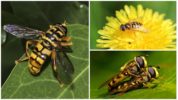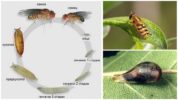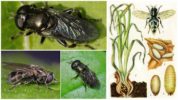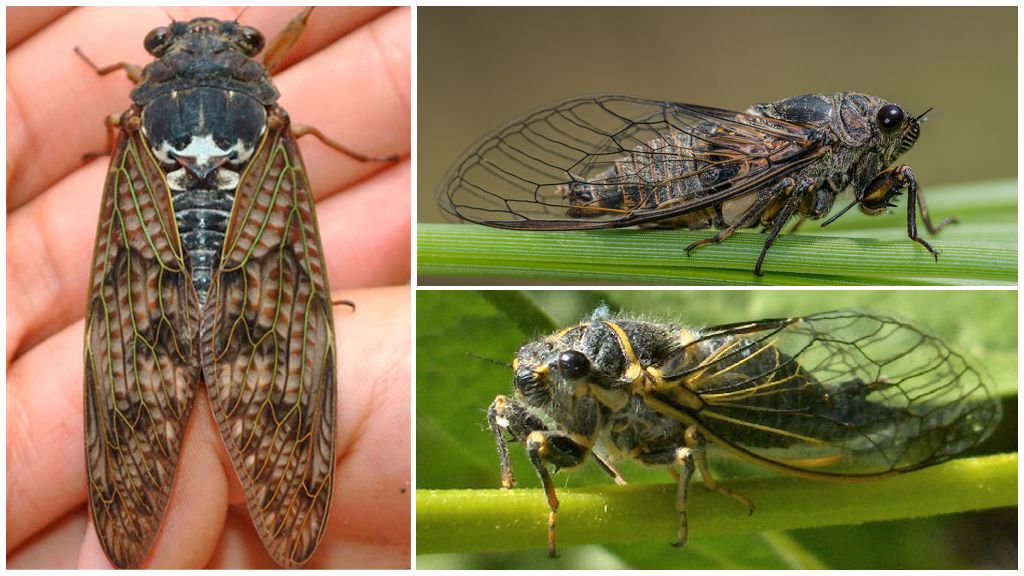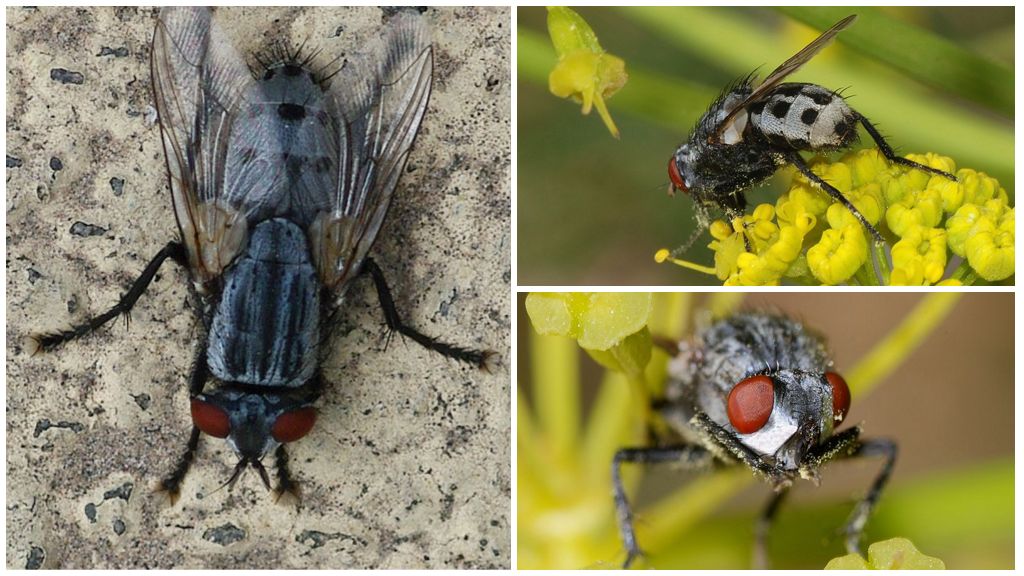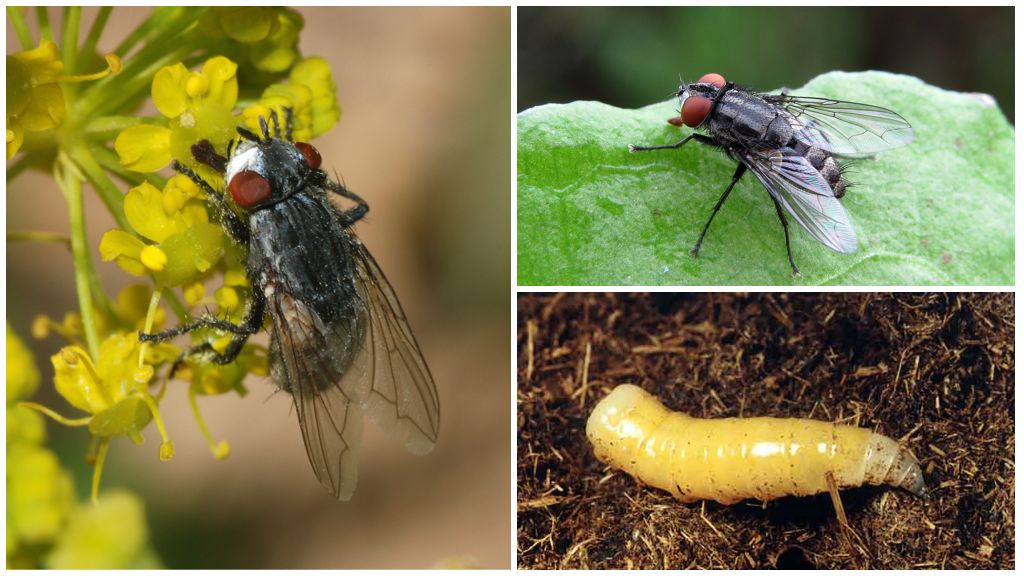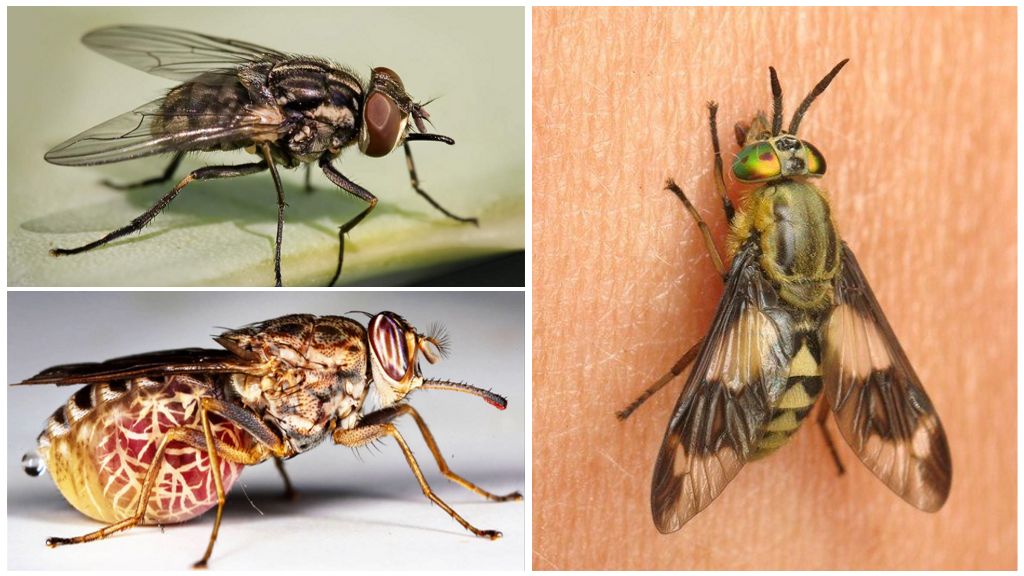- Fly bug
- Life Cycle of Sierphidae
- Onion grub
A female fly is a two-winged insect that looks like a bee or wasp, but differs from them in fewer wings. Where such an insect lives, its differences from predators, nutrition and reproduction - all information and interesting facts that will be interesting to nature lovers and gardeners.
Fly like a wasp
Creepers (lat. Syrphidae) are often found in gardens and dachas, where they actively pollinate flowers in garden and fruit crops.
On a note!
They are called beetles, thanks to the sounds made during the flight, similar to the murmur of running water.
They are widespread and are found on all continents at positive air temperatures. According to the biological classification, scientists attribute them to the order Korotkousy and the family of dipterans.
Sulfides use a wonderful ability to mimic, having a look very similar to stinging insects of bees and wasps that have the same yellow-black striped abdomen, as can be seen in the photo of the flies of beetles, thanks to which they are saved from attack by birds and predators. Creepers are virtuosos in the “flight” business: their ability to hover or barrage in one place, and then to tear off and fly away quickly, is their distinguishing feature. It is due to the unique structure of the wings: one pair — the usual ones, and the second — over time, reduced to buzz beetles, which have the shape of clubs, which helps the insect maintain balance and control the flight stop.
The males of the whisker fly have their own territory, which they vigilantly guard, periodically freezing in space. Even mating with females occurs in flight.
Outwardly, the beetles resemble bees or wasps: they have an elongated body with a yellow belly and black stripes, some species - a black body with yellow spots.
On a note!
Due to the similarity of the little beetles with stinging insects, many are interested in the question of whether they bite. The answer may be information about the lack of not only stings, but also poisonous glands. Therefore, for humans, they are absolutely harmless.
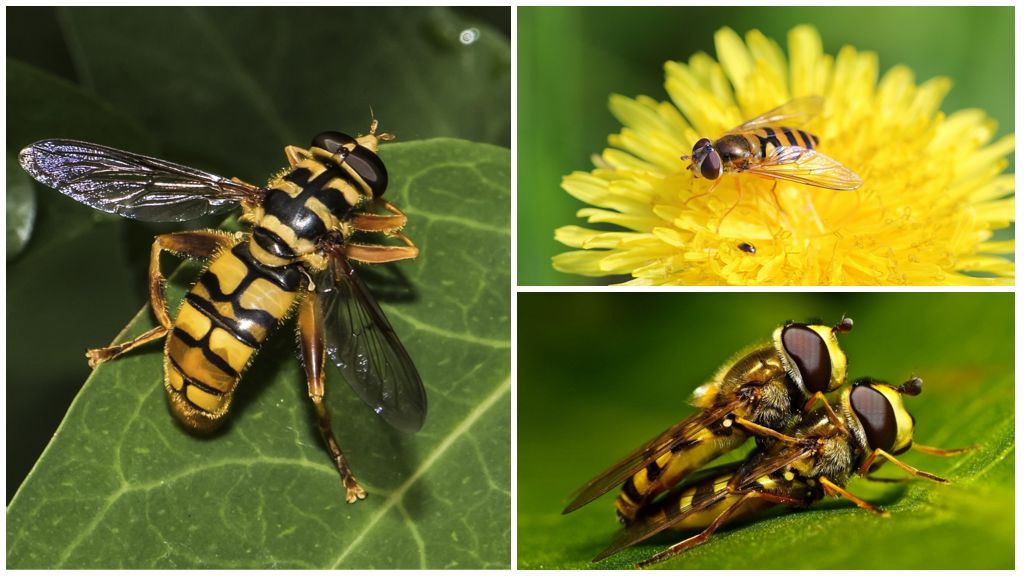
Types of Grouses
Such striped flies They have many varieties: in the world - up to 60 thousand, in Russia their number is 800. All species of female beetles differ in the different arrangement of yellowish and black stripes, as well as in the diet of their larvae: some of them are herbivorous, others are predators, and others eat bark of trees.
The most common ones are:
- Ordinary beetle or flower fly with yellow stripes, reaches a length of 12 mm, a good pollinator, the larvae of which destroy garden pests;
- Onion grub (Delia antique) - its size is about 1 cm, the larvae feed on the juice and pulp of bulbous plants;
- Wasp-like (Temnostoma vespiform) - a fly similar to a wasp by coloring and body shape, size up to 18 mm, its larvae consume rotten wood;
- Tenacious bee (Eristalis tenax) - a fly that looks like a bee, has a length of 15 mm, the color is darker;
- Water cricket or fly Eristalis (Eristalis) - lives near stagnant bodies of water, swamps or puddles with musty water, has a special proboscis for breathing to consume air from the surface;
- Tufted wasp-beetle (fasciolatum).
Nutrition and Life Cycle

Along with bees and bumblebees, syrphid flies are pollinators and feed on nectar and pollen, which is collected from plants and flowers. Sugar consumed from such food gives them the necessary energy, and pollen is needed in the form of protein for egg maturation and reproduction. They give preference to umbrella and asteraceae plants, fly in meadows, visiting dandelions and other flowers, also among fruit bushes and trees.
The first appearance of adult flies occurs at the end of spring, mating usually occurs only in July, however, active years will continue until the first half of August.
When laying eggs, adult females of a bee-like fly look for places where there will be rich food for future offspring, for example, an accumulation of aphids or small spider mites. Grubs larvae appear after 3-4 days, their length is usually about 1 cm, outwardly look like maggots. They hardly move, but actively eat aphids; their daily ration is up to 200 individuals, due to which they gradually grow.
Interesting!
During its development, each larva is able to absorb up to 2 thousand small insect pests, due to which it is a predator that is beneficial for garden plants. However, some species of flies plant tastes are also present. An onion bug, for example, eats onion greens, which is why it belongs to pests.
Gradually, a growing larva forms in a puparium - a shell that resembles a drop of resin, inside which an insect matures. The adult individual flies out of the cocoon, after 12-14 days, after 1-2 hours it spreads its wings and is able to fly.
On a note!
One female beetle lays about 200 white eggs per season, attaching them to grass or plant stems, less often directly to the soil. Then the generations are replaced.
Onion Creek: How to Get Rid

Of all the varieties of syrup, onion refers to pests of garden plants. Its larvae consume the pulp of vegetable and flower crops: onions and garlic, tulips and gladioli, hyacinths and daffodils. Damaged plants usually rot and die.
Important!
Creeper - an insect similar to onion flyHowever, the latter is distinguished by a smaller size (up to 8 mm) and a gray body color. The time of its activity falls at the end of spring - the beginning of summer, i.e., before syrfid.
Therefore, all bulb plantings should be carefully examined for pests and take special measures for getting rid of flies:
- Remove damaged plants immediately from the ground and burn.
- The beds are treated with the insecticidal preparations of Aktara, Decis, Agita: and etc.
- Every year, make a change in the place of planting of such flower crops.
- Plant carrots in the beds, because its smell is able to scare onion beetles and flies.
- To process beds with ammonia according to the same recipe as onion flies.
- It is good to loosen and mulch the soil in order to prevent its compaction - this measure allows you to prevent the appearance of syrup.
- For the prevention of the appearance of female onion beetles, it is recommended to process plantings with tobacco powder, ash, red pepper or naphthalene.
- After cleaning the beds with onions or garlic, it is recommended to treat the soil with copper sulfate.
However, most types of germs are beneficial insects, helping to pollinate flowers and fruit crops in areas where there are few bees, and eating large quantities of small pests. Therefore, they are considered as assistants to gardeners and florists, increasing plant productivity.
